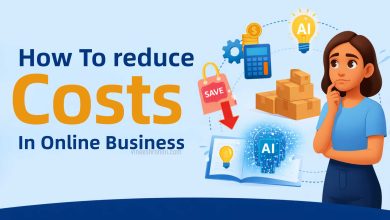Effective Strategies for Increasing Ecommerce Conversion Rates
In the highly competitive world of e-commerce, driving conversions is essential for business growth and success. Ecommerce conversion rates measure the percentage of website visitors who complete a desired action, such as making a purchase or filling out a form. Increasing conversion rates is a top priority for online retailers, as it directly impacts revenue and profitability. This essay explores effective strategies for increasing ecommerce conversion rates, covering various aspects from website design and user experience to marketing tactics and customer engagement.
1. Optimize Website Design and User Experience
a. Streamlined Navigation: Ensure that your website has clear and intuitive navigation, making it easy for visitors to find the products or information they’re looking for. Use a clean and organized layout, logical category structure, and prominent search functionality.
b. Responsive Design: With the increasing use of mobile devices for online shopping, it’s crucial to have a responsive website that adapts seamlessly to different screen sizes. A mobile-friendly design enhances user experience and reduces bounce rates.
c. Fast Loading Speed: Website speed significantly impacts conversion rates. Optimize your website’s performance by minimizing page load times, optimizing images, and using caching techniques. A fast-loading site improves user satisfaction and encourages them to stay and explore.
d. Simplified Checkout Process: Streamline the checkout process to minimize friction and cart abandonment. Implement a guest checkout option, offer multiple payment methods, and reduce the number of steps required to complete a purchase. Clear progress indicators and a simple form with minimal required fields are essential.
2. Improve Product Pages and Descriptions
a. High-Quality Product Images: Use high-resolution, professional product images that accurately represent the item. Multiple images from different angles, zoom functionality, and the option to view the product in different colors or variations enhance the customer’s understanding and confidence in the product.
b. Compelling Product Descriptions: Craft persuasive and detailed product descriptions that highlight the benefits, features, and unique selling points of the item. Use persuasive language, storytelling, and customer reviews to engage potential buyers and create a sense of urgency.
c. Clear Pricing and Promotions: Display clear and transparent pricing information, including any discounts or promotions. Avoid surprises at the checkout stage by providing accurate pricing details upfront. Use persuasive pricing strategies such as limited-time offers or free shipping thresholds to encourage conversions.
d. Social Proof: Incorporate customer reviews, ratings, and testimonials on product pages to provide social proof. Positive feedback and testimonials from satisfied customers build trust and confidence in your products, increasing the likelihood of conversions.
3. Implement Effective Call-to-Action (CTA) Strategies
a. Clear and Compelling CTAs: Use visually appealing and action-oriented CTAs that clearly communicate the desired action, such as “Buy Now,” “Add to Cart,” or “Subscribe.” Place CTAs strategically on product pages, category pages, and throughout the website to prompt users to take the desired action.
b. Urgency and Scarcity: Create a sense of urgency and scarcity to encourage immediate action. Limited-time offers, countdown timers, and stock availability notifications can motivate visitors to make a purchase before missing out on a deal.
c. A/B Testing and Optimization: Continuously test different variations of CTAs to determine which ones generate the highest conversion rates. Experiment with different colors, wording, placement, and design elements to identify the most effective combination.
4. Personalization and Targeted Marketing
a. Customer Segmentation: Divide your customer base into different segments based on demographics, preferences, purchase history, or behavior. Tailor marketing messages, product recommendations, and offers to specific segments, creating a personalized experience that resonates with individual customers.
b. Behavioral Retargeting: Implement retargeting strategies to reach users who have previously visited your website or abandoned their shopping carts. Display targeted ads or send personalized email reminders to remind them of the products they showed interest in, encouraging them to return and complete their purchase.
c. Email Marketing: Leverage email marketing to nurture leads, build customer loyalty, and drive conversions. Send personalized, relevant, and engaging email campaigns that offer value, such as exclusive discounts, product recommendations, and informative content.
5. Simplify Customer Support and Returns
a. Live Chat Support: Implement live chat functionality to provide real-time assistance to customers. Promptly address their queries, provide product recommendations, and guide them through the purchase process. A seamless customer support experience can instill confidence and increase conversions.
b. Clear Return Policies: Clearly communicate your return policies to alleviate concerns and increase customer trust. Make the return process simple, convenient, and transparent, as this reassures potential buyers that they can return or exchange products if needed.
Conclusion
Increasing ecommerce conversion rates is crucial for the success of online businesses. By implementing effective strategies that optimize website design and user experience, improve product pages and descriptions, utilize persuasive CTAs, personalize marketing efforts, and simplify customer support and returns, online retailers can significantly enhance their conversion rates and drive revenue growth. Continual monitoring, analysis, and adaptation based on customer feedback and data insights are essential to maintaining a competitive edge in the ever-evolving e-commerce landscape. By employing these strategies, businesses can create a seamless and engaging shopping experience that converts visitors into loyal customers.



